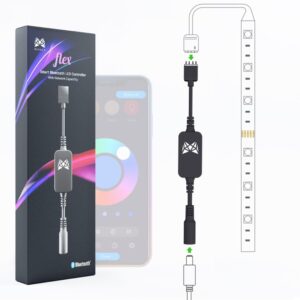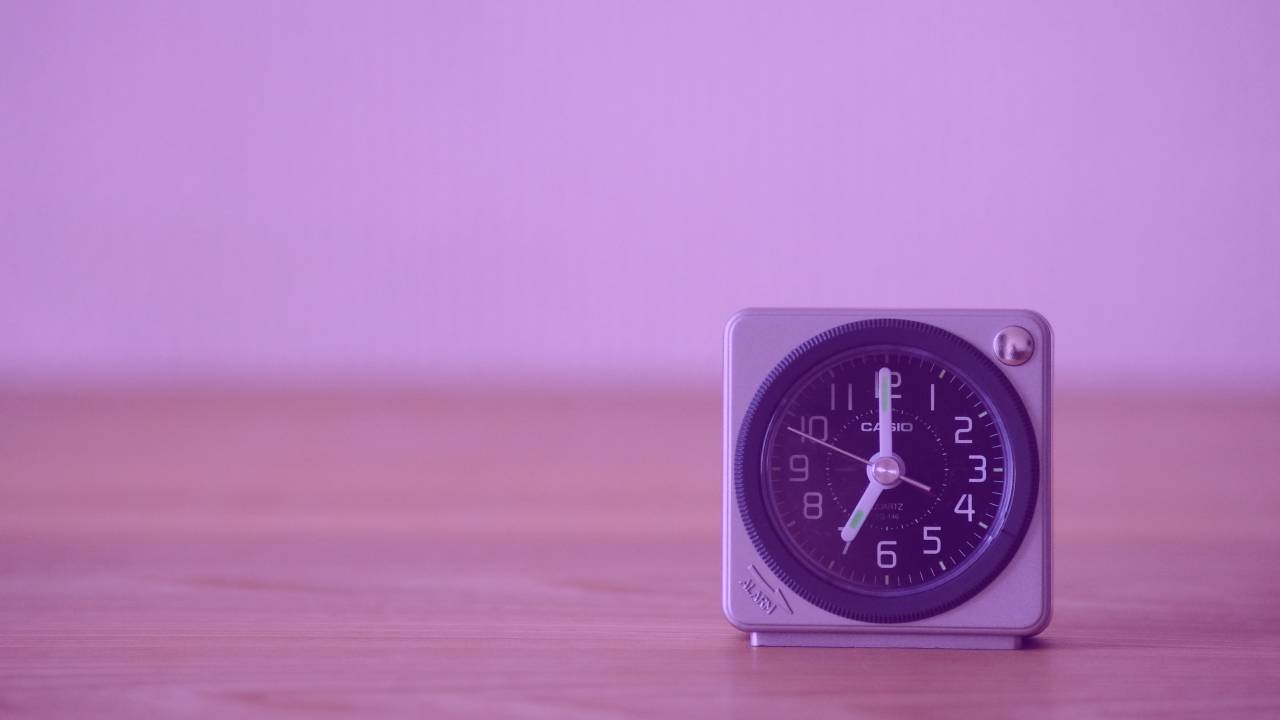Everyone knows how annoying an alarm clock can be when it snaps you out of a deep sleep with a loud “beep, beep, beep”. Only if you are lucky, you’re woken up from a light sleep phase. That’s why you quickly acquire the habit of pressing the snooze button. You try to wake up a little more refreshed, at least for a few minutes.
Hearing every morning “beep, beep, beep” is not the gentlest and most natural way to be woken up, that is why many people long for a gentler and noiseless alternative. A light alarm clock is suitable for exactly this purpose, which we will discuss in this blog article. We will also explain how you can use an existing room lighting as a light alarm clock.
How a Light Alarm Clock Works
Light alarm clocks always work in the same way: a light simulates the natural sunrise of the sun, gently and slowly waking up the body. Starting with dawn, i.e., dimmed, very soft and reddish light, a light alarm clock wakes up by steadily increasing the brightness over a period of, say, 30 to 60 minutes. At the time of the alarm, the color temperature then corresponds to that of daylight. Daylight contains a lot of blue light, which naturally wakes the body.

The light simulation of the light alarm clock has an effect on the subconscious in several stages. The brain interprets the gentle increase in brightness – through the closed eyelids -that it is soon time to wake up. The increasingly bright and bluish light stops the production of the sleep hormone melatonin and triggers the production of cortisol. Cortisol is a stress hormone that activates the autonomic nervous system. As a result, the deep sleep phase is terminated and one wakes up gently.
The Light Alarm Clock Enables a Healthy Sleep-Wake Rhythm
Chronobiology, which also includes circadian rhythms, deals with the natural sleep-wake rhythms of humans and other living beings and plants. In this context, light serves as one of the most important rhythm setters for our human body. Our sleep-wake rhythm is reset every morning by looking at daylight, which is essential for our health and well-being.
The human visual system also recognizes the intensity of the sun’s illumination and the constantly changing position of the sun – in other words, the color temperature and color spectrum of the light.
As mentioned before, light serves as a natural alarm clock for humans by stopping the production of melatonin and stimulating the production of cortisol. At the same time, looking at the daylight in the morning is essential for our health. So using light as an alarm clock seems ideal. It would be even better if this is harmonizing with the sunrise and sunset and thus the season.
Use Lighting as a Light Alarm Clock
The best-known and best-selling light alarm clocks are large lamp-like devices for the bedside cabinet, such as the SmartSleep Sleep & Wake-Up Light from PHILIPPS. Beurer also offers various light alarm clocks, and many inexpensive imitation models are now available on Amazon and AliExpress.
But if you want to wake up with light, you don’t necessarily have to buy a light alarm clock! Alternatively, our MESHLE flex controller can be used to use LED strips installed in the bedroom not only as lighting, but also as a light alarm clock. A flush-mounted LED dimmer can also be configured to act as a light alarm clock. So instead of a dedicated light alarm clock, the existing room lighting is used as an alarm clock.

Realizing a Light Alarm Clock with MESHLE
MESHLE flex are smart LED controllers for LED strips. LED strips are increasingly being installed as indirect lighting in modern residential buildings or retrofitted by many people under the ceiling, bed or behind the TV, among other things.

LED strips usually come without any control at all. Either they are switched on or off via a simple switch, or at best a cheap infrared remote control comes with the LED strip set. With this remote control, the brightness or color can be adjusted. Complex timers or alarm clocks are not possible. If you install several LED strips in one room or in one apartment, you quickly have a mess of different remote controls.
MESHLE flex was developed with exactly this in mind: to replace non-intelligent remote controls to network multiple LED strips so that they can be controlled and automated with many smart features in a free Android or iOS app.
The MESHLE App and the MESHLE flex LED-controller come with many features, including a timer feature, an HCL feature and an Astro feature. Together, these features enable you to use your lighting as a light alarm clock.
Timer Feature
The MESHLE app has a timer feature that can be used to automatically switch on the light. For instance, at 6:00 a.m. from Monday to Friday. To prevent this from happening instantly, the light can be set to increase slowly from 0% brightness to 100% brightness over a period of 30 minutes. The desired color temperature can also be set and defined.
Astro Timer Feature
As mentioned before, it would be ideal to wake up in tune with the sunrise and sunset and thus the season. The Astro feature of the MESHLE app allows you to do just that, by setting an alarm clock to go off – not statically every day at 06:00 – but in tune with the sun. For example, you can wake up 45 minutes before sunrise every day.
The MESHLE app’s Astro feature stores the geolocation of the device into the device. The device, such as the MESHLE flex LED controller, then calculates the sunrise and sunset time every day by itself and completely automatically.
The following video shows how to set a timer in the MESHLE app. In the video, the lighting is configured to turn on slowly 15 minutes before sunrise each day.
The Astro feature can be used not only as an alarm clock, but also a very dim red night light can be set until sunrise. Red light, unlike blue light, does not suppress melatonin production.
Conclusion
Whether you have to wake up at the same time every day, or enjoy the luxury of being able to follow your circadian rhythm, the MESHLE flex LED controller and the MESHLE app can turn a bedroom light into a light alarm clock in just a few steps.
By the way, anyone who is not sure whether a light alarm clock is reliable enough to be used as a wake-up alarm can just use a regular loud alarm clock as a backup. For example, 15 minutes after the light alarm clock reaches full brightness, a backup alarm can ring. But we certainly remember how often, quickly and agonizingly our mother woke us up with the light switch as a child.


